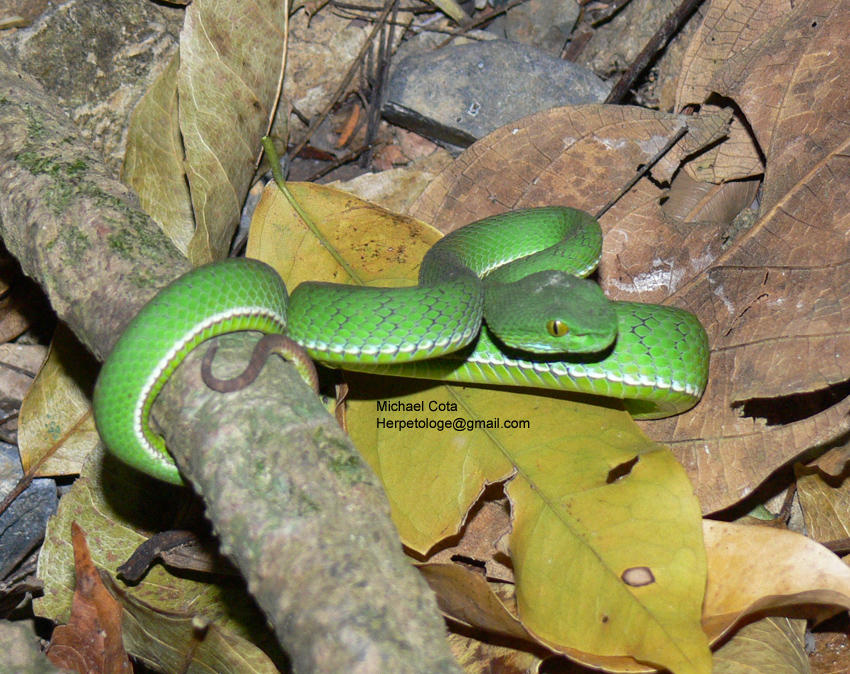Ophiophagus hannah (individual Cobra) Thai: Ngu jong ang

This specimen comes from Nong Khai and all those in the Isaan Region are distinctly banded, like this specimen. Neonates and juveniles are even more distinctly banded in black and either dull yellow or white. Not usually found near where people are, very shy and usually found only in forest.
Naja siamensis (Indochinese Spitting Cobra) Thai: Ngu hao pon pit
http://biology.bangor.ac.uk/%7Ebss166/T ... nsisBW.jpg
The pattern is highly variable in this species, but it is the only species of true cobra in Udon Thani. Those in western Nong Bua Lamphu do have Naja kaothia (Monocled Cobra) Thai: Ngu hao
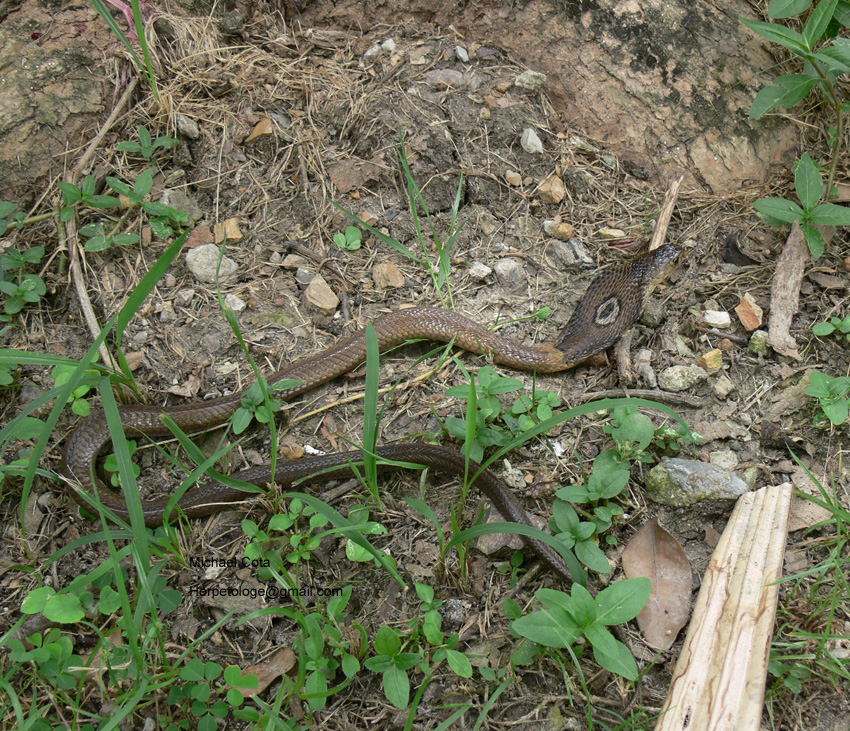
Both types of cobra can be found in a variety of habitats, as well as farmlands and around human habitation.
Bungarus candidus (Blue Krait) Thai: Ngu tab tan (Isaan dialect)

This species will never be seen active during the day; it is strictly nocturnal (only active at night time). When caught in daylight, it appears sluggish, disoriented and blind. During the night, it can move rapidly.
Bungarus faciatus (Banded Krait) Thai: Ngu sam liam
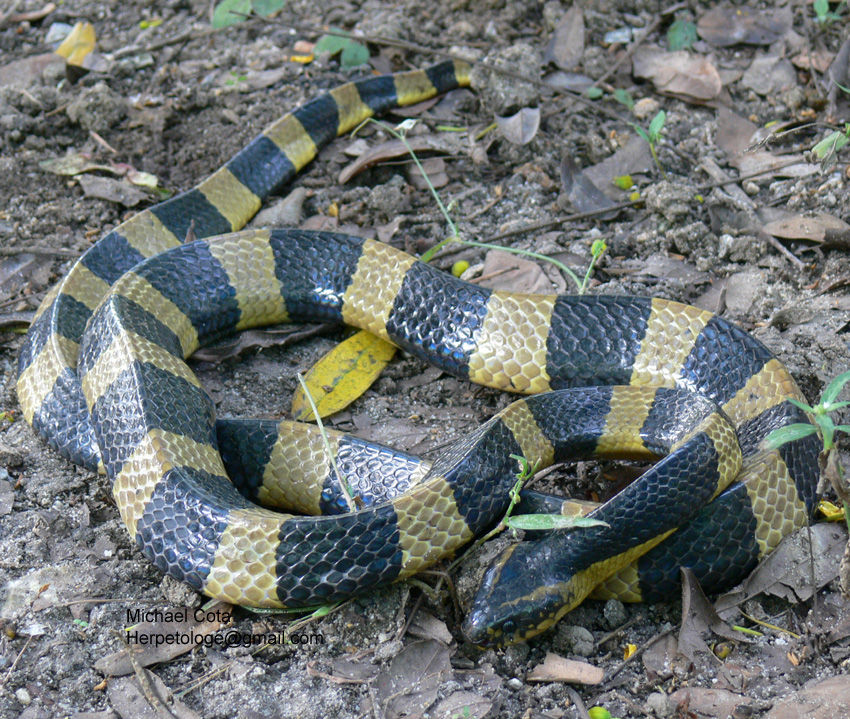
This species will never be seen active during the day; it is strictly nocturnal (only active at night time). When caught in daylight, it appears sluggish, disoriented and blind. During the night, it can move rapidly. This is the most common species of krait in Thailand.
Calliophis maculiceps (Small-spotted Coral Snake) Thai: Ngu plong wai hua dam
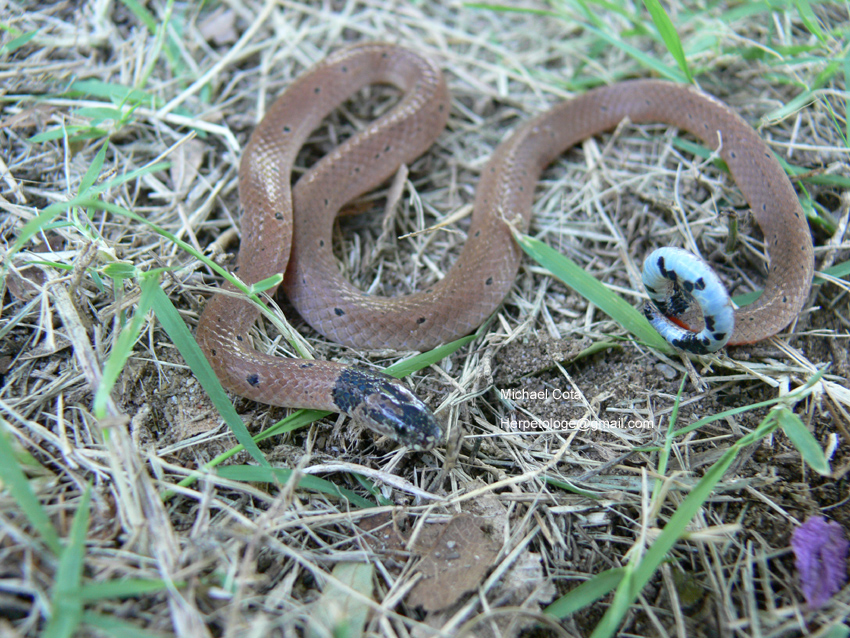
This species will never be seen active in the day. Usually found around or inside rotting logs, where it can find its prey, blind snakes, which feed on ant eggs and larvae. It can be spotted as pictured, striped or nearly uniform in colour. The head appears the same in all variations. Note the tail: all will make a similar tail display.
Cryptelytrops albolabris (White-lipped Pit Viper) Thai: Ngu kieow hang mai tong lueng
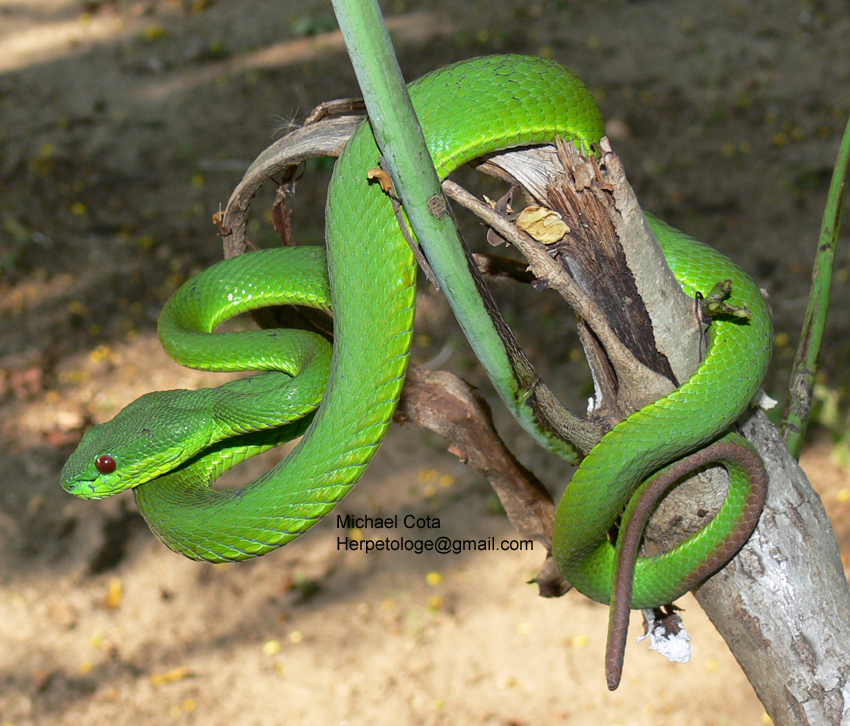
This snake is usually only active at night and usually found in the trees of forests near or not too far away from streams. Highly variable in appearance, particularly eye colour.
Viridovipera gumprechti (Gumprecht's Pit Viper) Thai: (new species split, no Thai common name, was: Ngu kieow pai)
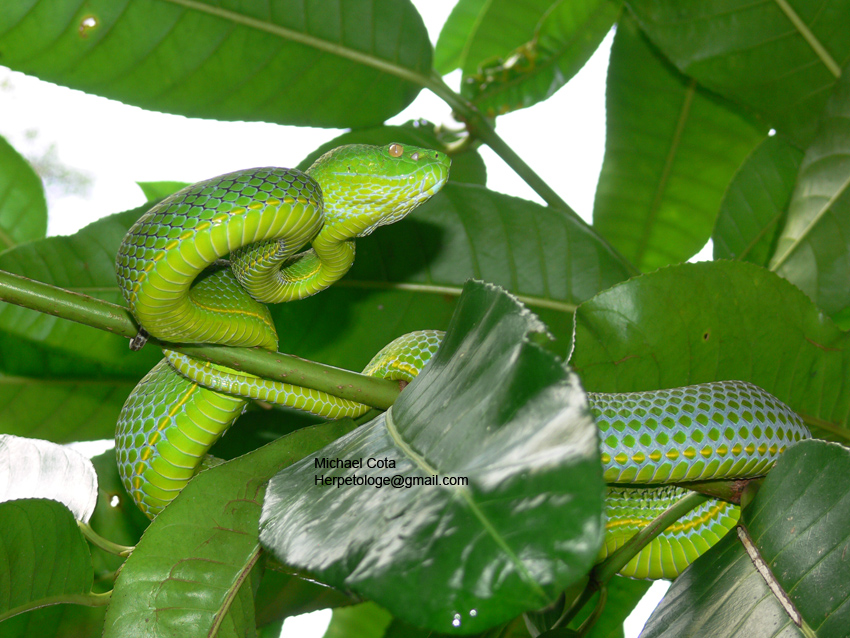
The snake pictured is not Viridovipera gumprechti, but is actually Viridovipera vogeli. Both are so similar that only an expert can tell the difference by closely examining the actual snakes. Primarily active at night and usually found in the trees of the forest near or not too far away from streams. Only found in northern most Udon Thani province and Nong Khai
Calloselasma rhodostoma (Malayan Pit Viper) Thai: Ngu kaba
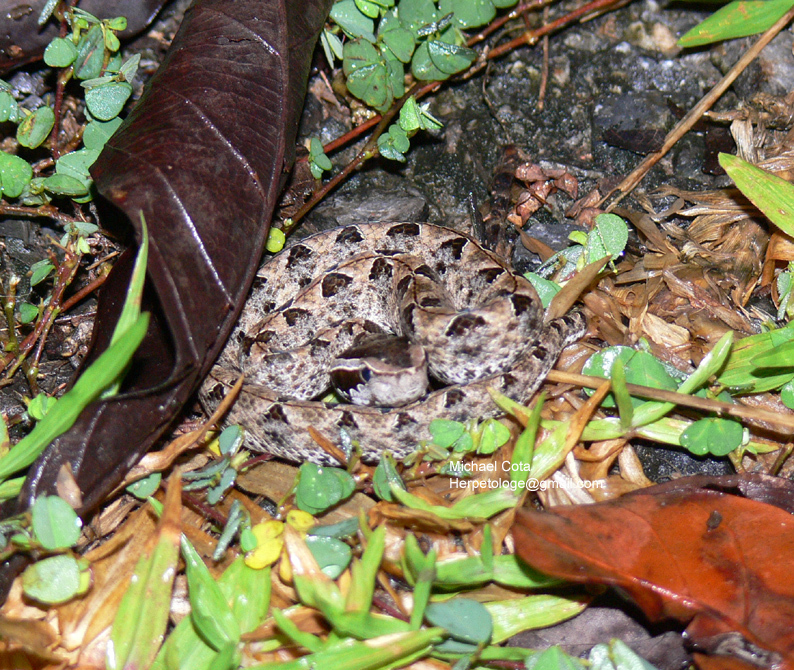
Usually inactive both day and night. It is an ambush hunter that usually awaits prey in leaf litter. This snake kills more people in Thailand than any other snake, but is not common in this area, as it prefers moist areas or areas of high humidity.
Rhabdophis subminiatus (Red-necked Keelback) Thai: Ngu lai sab kor daeng
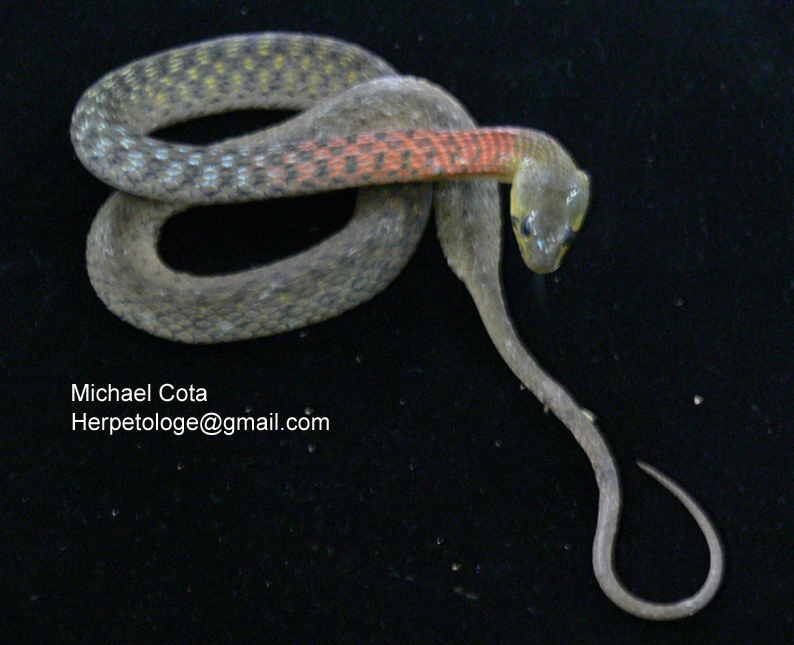
Usually found in the forest around or not too far away from streams. This is the only rear-fanged snake known to have caused human fatalities. Its venom attacks the kidneys, having a dissolving effect.
*Moderators, if the pictures are too much, please edit to just leave the links.



